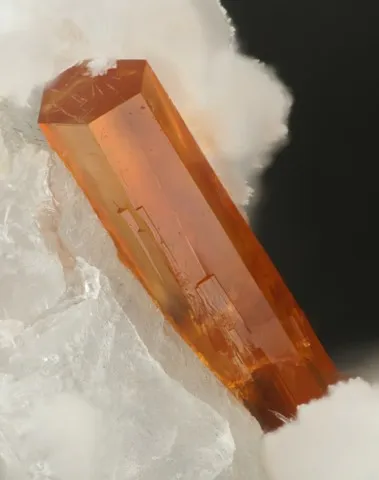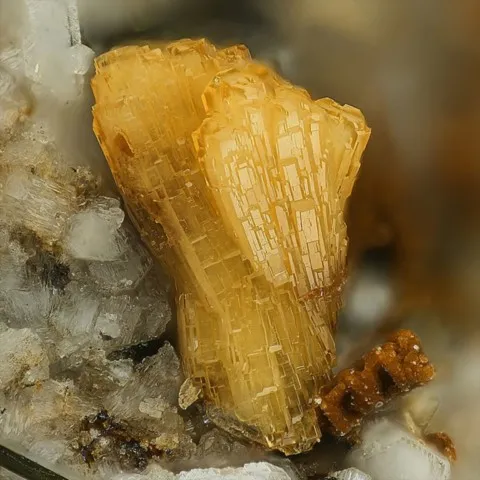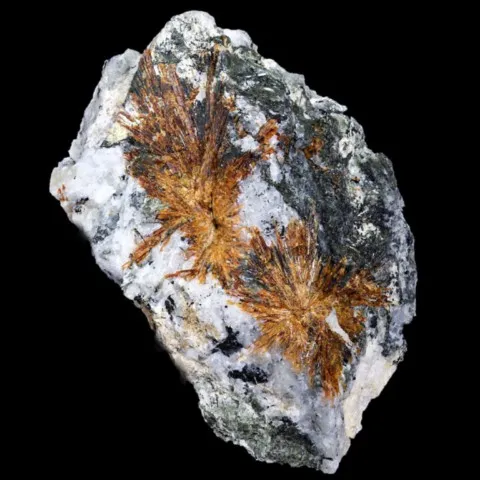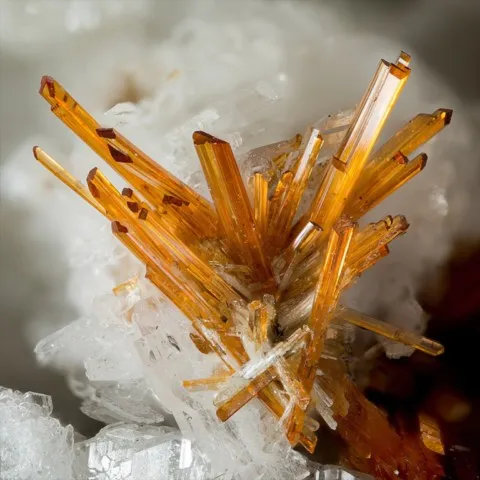LABUNTSOVITE
Class : Silicates
Subclass : Sorosilicates
Crystal system : Monoclnic
Chemistry : (K,Na)3Ti2(SiO3)4(O,OH)2 nH2O
Rarity : Very rare
Labuntsovite is a very rare mineral group found in alkaline rocks deficient in silica (nepheline syenites, carbonatites, etc...). It consists of 3 distinct species, labuntsovite-Fe, labuntsovite-Mg and labuntsovite-Mn. It was named in honor of the Russian mineralogists Aleksander Nikolaevich Labuntsov and Ekaterina Evtikhieva Kostyleva-Labuntsova whose work focused mainly on the Kola Peninsula. Labuntsovite occurs in centimeter-sized prismatic to acicular crystals (up to 15 mm), often in radiated aggregates or spherolites, red to yellow-brown in color.
Main photo : Labuntsovite from Poudrette quarry, Mont St-Hilaire, Quebec, Canada © Stephan Wolfsried
Labuntsovite in the World
Twinning
No twin are known for this mineral species.
Fakes and treatments
No fakes recorded for this mineral species.
Hardness : 5 to 6
Density : 2.89 to 3.02
Fracture : Sub-conchoidal
Streak : White
TP : Translucent to transparent
RI : 1.684 to 1.814
Birefringence : 0.108 to 0.119
Optical character : Biaxial +
Pleochroism : Visible
Fluorescence : None
Solubility : Hydrofluoric acid
Magnetism : NoneRadioactivity : None





